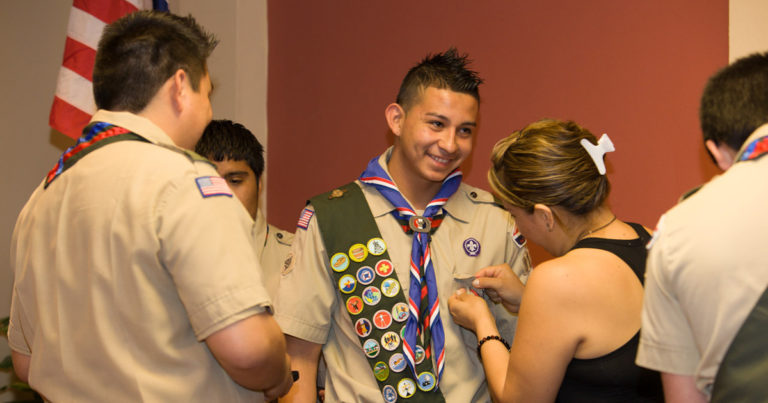The big difference between Cub Scout advancement and Boy Scout advancement

Rank advancement in Cub Scouting is not like rank advancement in Boy Scouting. And that’s by design.
In Cub Scouting, advancement is grade- or age-based. It’s a rank-per-year system designed to offer age-appropriate fun and challenges as Cub Scouts progress through the program.
Cub Scouts don’t go back and work on ranks designed for earlier grade levels. They also can’t move ahead to the next rank if they finish requirements early.
In Boy Scouting, though, Scouts hold the reins. Boy Scouts advance at their own pace — independent of grade, age or the progress of their fellow Scouts.
While there’s a recommended speed at which ranks are completed, a Boy Scout can advance at his own pace. The only real deadline: age 18, when a Boy Scout is no longer a youth member of the BSA.
Cub Scout advancement
The first badge all Cub Scouts (except those in the Lion Pilot program) earn, regardless of age, is the Bobcat badge. After earning Bobcat, Cub Scouts work on advancement for their grade or age level.
- Bobcat. Earned first by all Cub Scouts, no matter what age they join.
- Tiger. For boys who have completed kindergarten or are 7 years old.
- Wolf. For boys who have completed first grade or are 8 years old.
- Bear. For boys who have completed second grade or are 9 years old.
- Webelos. For boys who have completed third grade or are 10 years old.
- Arrow of Light. For boys who have completed fourth grade.
Cub Scouts do not go back and work on ranks designed for earlier grade levels, even if missed because of their time of joining. Likewise, Cub Scouts do not move ahead to the next rank until the completion of the current school year.
The highest rank, Arrow of Light, is earned as the Cub Scout leaves Cub Scouting and enters Boy Scouting.
Boy Scout advancement
Boy Scout advancement isn’t age- or grade-based. The Scout, with support and guidance from his parents and Scout leaders, progresses at his own pace.
The most current (13th) edition of the Boy Scout Handbook suggests that Boy Scouts earn the Scout rank “soon after joining.” It goes on to say that earning Tenderfoot, Second Class and First Class should happen within the first 12 to 18 months of being a Boy Scout.
At Star, Life and Eagle, Boy Scouts tend to spread out a little bit. Some Scouts advance through those ranks quickly while others take their time. There’s no right approach — every Boy Scout is different.
Beginning at the Star rank, the BSA adds time-based requirements:
Star: Active as a First Class Scout for at least four months; serve in a position of responsibility for at least four months.
Life: Active as a Star Scout for at least six months; serve in a position of responsibility for at least six months.
Eagle: Active as a Life Scout for at least six months; serve in a position of responsibility for at least six months.
Add those requirements up, and you’ll get a minimum of 16 months between becoming First Class and earning Eagle. That’s a minimum. I have argued in the past that Boy Scout advancement is a wonderful journey, not a race.
Clearing up misconceptions
The mechanics of Cub Scout advancement could leave Scouts and parents with a mistaken belief that Boy Scout advancement works the same way.
There are seven ranks in Boy Scouting, and an 11-year-old Boy Scout has seven years before he turns 18. Seven ranks, seven years? Some families assume that a Boy Scout must earn Eagle just before turning 18.
Of course that’s not the case, but it could be part of the reason why the average age of Eagle Scouts in 2016 was 17 years and 127.75 days.
That’s why the BSA recommends discussing Boy Scout advancement during new Scout and parent orientation. Some points to make:
- Advancement in Boy Scouting is based on individual initiative with guidance and encouragement from the patrol leader, Scoutmaster, and other youth and adult leaders.
- Boy Scouting has seven ranks: Scout, Tenderfoot, Second Class, First Class, Star, Life and Eagle. Requirements are found in the Boy Scout Handbook and online.
- Advancement has four steps: Learn, Test, Review and Recognize.
- Some of the requirements for each rank have a time element, so Scouts will want to plan ahead so they don’t run out of time.
- Alternative advancement paths are available for Scouts with permanent physical or developmental challenges.
The big difference between Cub Scout advancement and Boy Scout advancement
